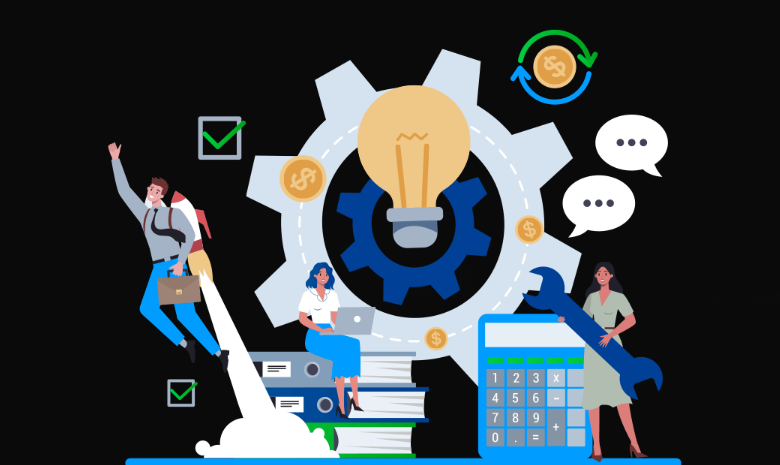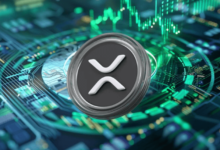Understanding the Customer Journey from Start to Finish

The customer journey encapsulates the entire arc of a customer’s interactions with a brand, from their first spark of awareness to their ongoing relationship as a loyal advocate. In today’s multifaceted market, where buyers navigate a complex web of digital and physical touchpoints, understanding this journey is pivotal for businesses aiming to forge meaningful connections. Whether engaging B2B decision-makers or B2C consumers, a clear grasp of the journey’s stages—awareness, consideration, purchase, and retention—enables companies to align strategies with customer needs, optimize experiences, and drive sustainable growth. This article delves into the customer journey from start to finish, illuminating its components and strategic significance for businesses striving to excel in a competitive landscape.
The Genesis of Engagement: Awareness
The customer journey begins with awareness, the moment a potential customer encounters a brand or its offerings. This stage is about capturing attention in a crowded marketplace, where buyers are inundated with information. For B2C consumers, awareness might stem from a social media ad on Instagram showcasing a new fashion line, while B2B buyers might discover a vendor through a targeted LinkedIn post addressing industry challenges.
Businesses must strategically position themselves where their audience is most active. Search engine optimization (SEO) ensures discoverability through queries like “best project management tools” for B2B or “sustainable skincare” for B2C. Thought leadership content, such as blog posts or webinars, can also spark interest by addressing pain points. For instance, a software company might publish an article on streamlining workflows, drawing in operations managers seeking solutions.
The goal at this stage is to create a memorable first impression. Compelling visuals, clear messaging, and value-driven content ensure the brand stands out, encouraging customers to take the next step in their journey.
See also: 5 Most Popular Ways to Promote Your Business
Exploration and Evaluation: Consideration
Once aware of a brand, customers enter the consideration stage, where they actively research and compare options. This phase is marked by a quest for information, as buyers seek to determine whether a product or service aligns with their needs. A B2B decision-maker might explore a vendor’s website, download a whitepaper, or attend a product demo, while a B2C shopper could read reviews on a platform like Trustpilot or watch a YouTube tutorial.
Businesses must provide robust, accessible resources to support this exploration. Detailed product pages, case studies, or comparison guides empower buyers to make informed decisions. For example, a B2B cybersecurity firm might offer a webinar showcasing its platform’s features, addressing concerns about data protection. In B2C, a retailer could provide a video demonstrating how to use a new kitchen appliance, alleviating doubts about functionality.
Personalization enhances this stage. Using data from website visits or CRM interactions, businesses can tailor content to specific needs. A B2B vendor might send a targeted email with a case study relevant to a prospect’s industry, while a B2C brand could recommend products based on browsing history. By facilitating thorough evaluation, businesses build trust and guide customers toward a decision.
The Moment of Commitment: Purchase
The purchase stage is where customers make their final decision, converting interest into action. In B2C, this might involve completing an online checkout, while in B2B, it could entail signing a contract after negotiations. This stage is critical, as any friction—such as a complicated checkout process or unclear pricing—can lead to abandonment.
For B2C, optimizing the purchase experience means ensuring a seamless transaction. A retailer might offer multiple payment options, like PayPal or Apple Pay, and transparent shipping details to prevent surprises. Trust signals, such as secure payment badges or customer reviews, reassure buyers. For example, a fashion brand could display verified testimonials on its checkout page to boost confidence.
In B2B, the purchase stage often involves multiple stakeholders, requiring tailored proposals and clear communication. A vendor selling enterprise software might provide a detailed ROI analysis for finance teams and a technical integration plan for IT, addressing diverse needs. Streamlined processes, like e-signature tools for contracts, can accelerate decisions.
By removing barriers and reinforcing credibility, businesses ensure the purchase stage is a smooth transition, converting prospects into customers.
Nurturing Long-Term Bonds: Retention
The customer journey extends far beyond the sale, with retention focused on fostering loyalty and advocacy. Post-purchase engagement is critical, as satisfied customers are more likely to return, renew, or recommend the brand. In B2C, a retailer might send a follow-up email with product care tips or a discount for a future purchase, while a B2B vendor could offer personalized onboarding to ensure clients maximize value.
Ongoing support is a key touchpoint. A B2B software provider might assign a dedicated account manager to address client needs, while a B2C brand could offer 24/7 customer support via chat. For instance, a fitness brand might provide a mobile app with workout guides for customers who purchased equipment, enhancing their experience.
Loyalty programs strengthen retention. In B2C, rewards points for repeat purchases incentivize return visits, while in B2B, priority support or exclusive features can encourage contract renewals. Feedback loops, such as surveys or account reviews, allow businesses to refine post-purchase touchpoints, ensuring they align with customer expectations.
Harnessing Data to Inform Strategies
Data is the lifeblood of understanding the customer journey, providing insights into behaviors, preferences, and pain points. Analytics tools track quantitative metrics, such as website traffic, email open rates, or conversion rates, revealing how customers navigate the journey. For example, a B2B vendor might notice high engagement with technical webinars, indicating a need for more educational content.
Qualitative data, gathered through surveys, interviews, or social listening, uncovers emotional drivers. A B2C retailer might learn that customers value eco-friendly packaging, while a B2B buyer could express frustration with slow response times. Combining these insights allows businesses to tailor strategies, such as optimizing content for B2B consideration or streamlining B2C checkouts.
Privacy is a critical consideration. Transparent data practices and compliance with regulations like GDPR build trust, ensuring customers feel confident sharing information. By leveraging data responsibly, businesses gain a deeper understanding of the journey and drive targeted improvements.
Integrating Channels for a Seamless Experience
The modern customer journey spans multiple channels—social media, websites, emails, and in-person interactions—requiring businesses to deliver consistency across all touchpoints. A B2C shopper expects a promotion seen on TikTok to match the website offer, while a B2B buyer assumes a webinar’s messaging aligns with a sales pitch.
Integrated platforms, like CRM systems or marketing automation tools, enable this cohesion. A CRM can track a customer’s journey from a social media ad to a purchase, ensuring seamless transitions. For example, a B2B sales rep can reference a prospect’s prior interactions, like a downloaded case study, to tailor a pitch.
Omnichannel strategies are essential. Businesses must identify where customers engage most—Instagram for B2C or LinkedIn for B2B—and optimize those channels. Regular audits ensure messaging and branding remain consistent, preventing confusion and enhancing the overall experience.
Addressing Friction to Enhance Engagement
Friction points, such as complex processes or inconsistent messaging, can disrupt the customer journey and reduce conversions. Identifying these through data analysis and customer feedback is critical. For instance, a B2C retailer might find that unclear return policies deter purchases, while a B2B vendor could discover that lengthy approval processes cause delays.
Proactive solutions are key. A B2C brand might simplify its checkout page or add a chatbot for real-time support, while a B2B vendor could introduce e-signature tools to streamline contracts. A/B testing can validate these changes, comparing two versions of a landing page to see which drives more engagement.
Customer feedback, gathered through surveys or support interactions, ensures solutions resonate. By addressing friction, businesses create smoother journeys that keep customers moving toward purchase and beyond.
Leveraging Technology for Precision
Technology amplifies the ability to understand and manage the customer journey. AI-powered tools predict behaviors, such as identifying high-value B2B leads or recommending products for B2C shoppers. Marketing automation platforms streamline communications, like sending personalized follow-ups after a website visit.
For example, a B2C retailer might use AI to suggest complementary products during checkout, while a B2B vendor could deploy a chatbot to answer technical questions during consideration. Augmented reality (AR) can create immersive touchpoints, like allowing B2B buyers to visualize equipment in their facilities.
Integration is crucial. A cohesive tech stack ensures data flows seamlessly, enabling real-time adjustments. By leveraging technology, businesses can deliver precise, scalable experiences that align with customer needs.
Adapting to a Dynamic Landscape
The customer journey evolves with changing buyer behaviors, technologies, and market trends, requiring businesses to remain agile. Regular journey map updates, informed by KPIs like conversion rates or customer satisfaction scores, ensure strategies stay relevant. For instance, a B2C brand might adapt to increased mobile app usage, while a B2B vendor could incorporate virtual demos to meet new preferences.
Emerging trends, like sustainability or AI-driven personalization, also shape the journey. A B2C retailer might highlight eco-friendly practices to appeal to conscious consumers, while a B2B vendor could emphasize data security to address growing concerns. Engaging customers through feedback or co-creation ensures the journey reflects their evolving needs.
By staying adaptable, businesses keep the customer journey aligned with current realities, driving engagement and loyalty in a competitive market.
Building a Customer-Centric Future
The customer journey is a powerful lens through which businesses can understand and shape buyer experiences. From sparking awareness to nurturing loyalty, each stage offers opportunities to deliver value and build trust. By harnessing data, integrating channels, addressing friction, and leveraging technology, businesses can create journeys that resonate deeply. In a world where customer expectations continue to rise, mastering the journey from start to finish is not just a strategy—it’s a necessity for fostering enduring relationships and achieving lasting success.






